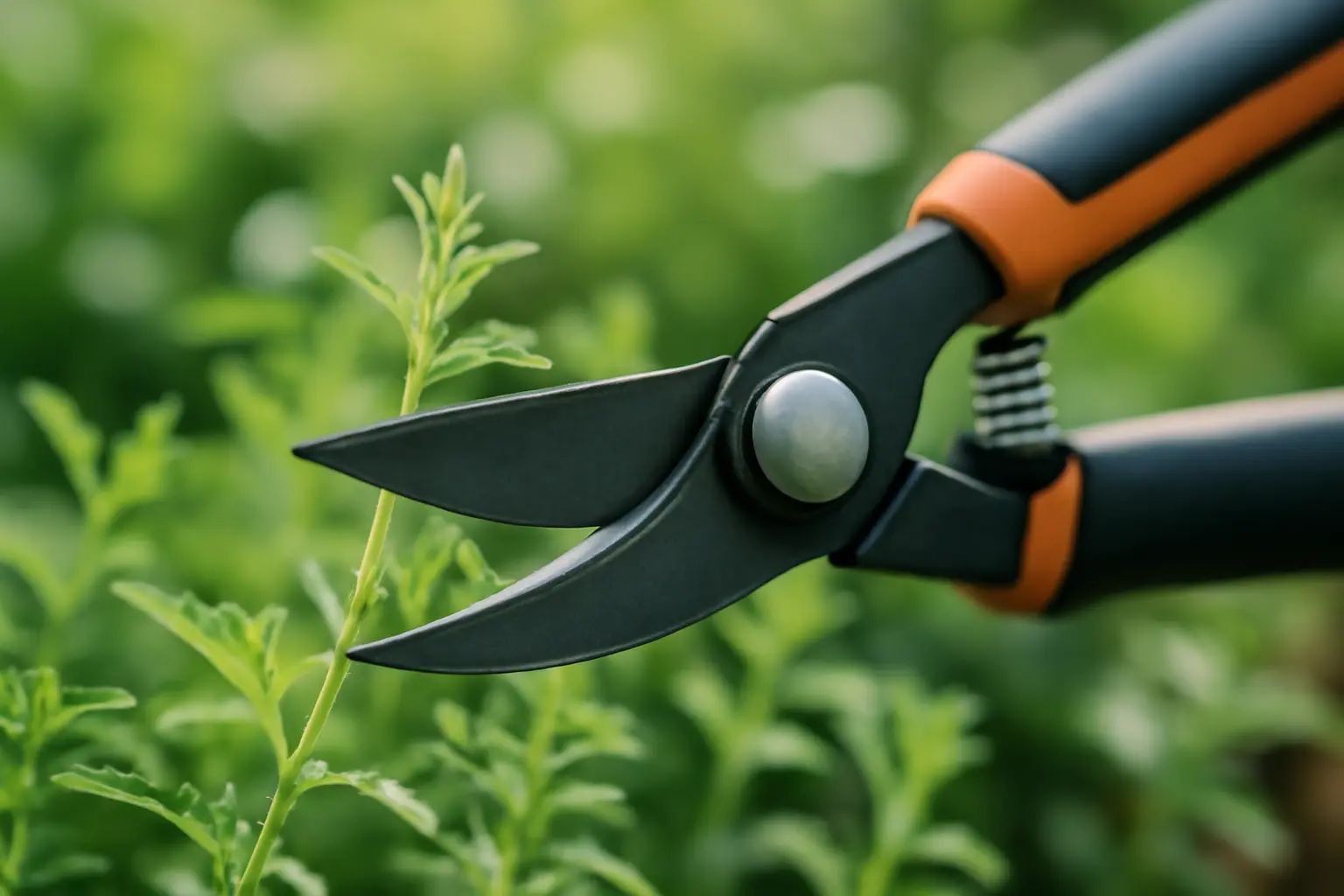1. What Are Small Pruning Shears?
The value of small pruning shears lies in their ability to reach tight spots where bigger tools cannot operate without damaging surrounding foliage. Gardeners often rely on these shears for tasks requiring agility and exactness, such as removing spent blooms or trimming new growth to encourage plant vigor. When choosing small pruning shears, one typically considers blade sharpness, ergonomic grips, and spring mechanisms, all contributing to comfort during extended use.
In practice, for example, a rose gardener in 2025 would prefer small pruning shears for deadheading to prevent disease entry and promote continual flowering, tasks impossible with bulky cutting devices. Overall, small pruning shears remain essential for detailed garden maintenance, balancing functionality and finesse in modern gardening tool collections.
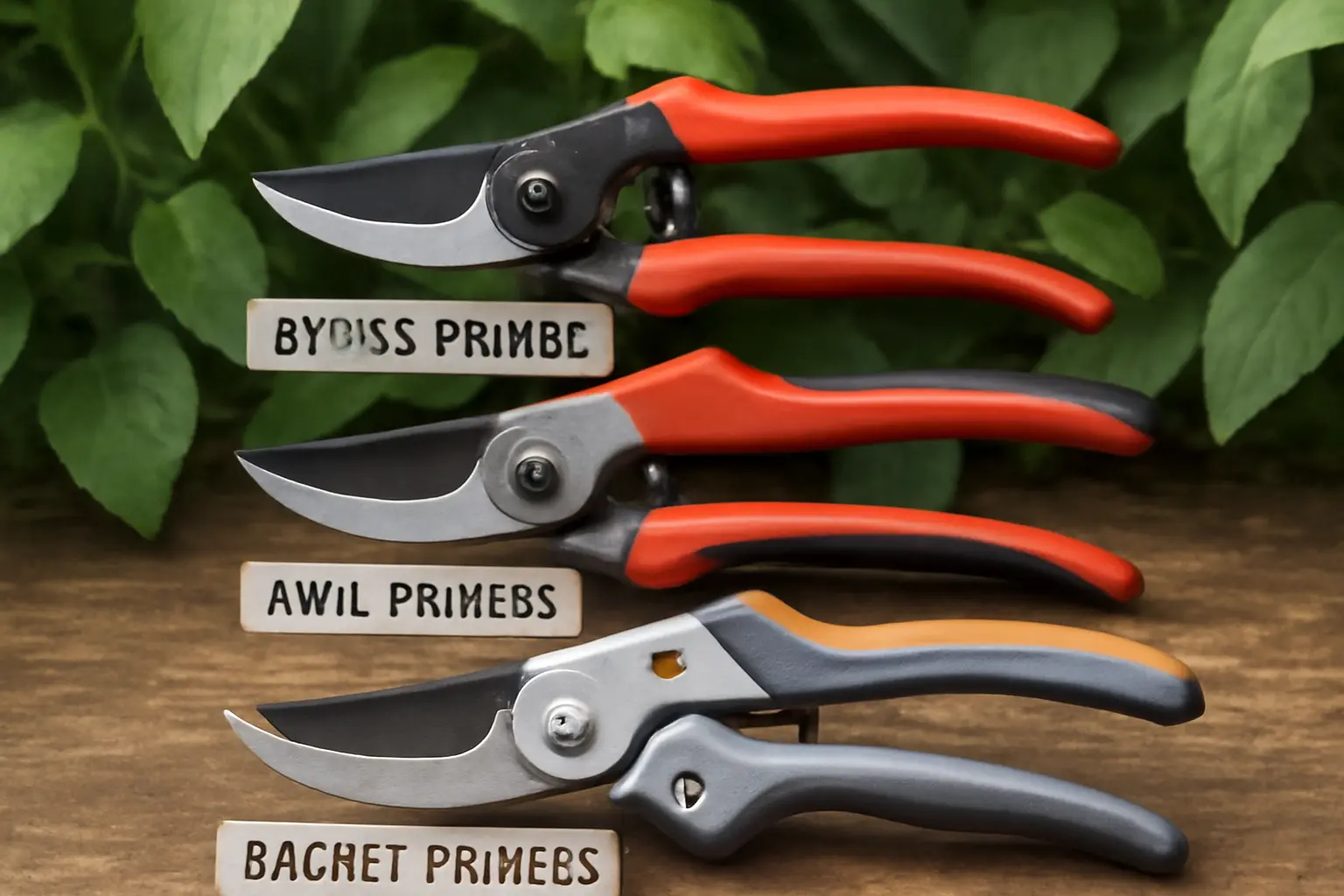
2. Types of Small Pruning Shears and Their Uses
– Bypass pruners: These shears function like scissors, with two curved blades passing by each other. Ideal for cutting live branches and stems, they provide clean cuts that encourage healthy growth. Gardeners rely on them for trimming thicker herb stems and woody flower branches.
– Pruning snips: Smaller and lightweight, pruning snips offer excellent control for detailed trimming. They are perfect for shearing soft herbs, deadheading flowers, and shaping small plants. Their compact size suits intricate garden tasks without damaging surrounding foliage.
– Microtip shears: Featuring fine, pointed blades, microtip shears excel in precision work. They allow cutting of tiny stems and buds with minimal disturbance, ideal when maintaining bonsai or delicate indoor plants.
Ergonomic considerations matter significantly; handles designed to fit comfortably in the hand and reduce strain enable prolonged use without fatigue. Non-slip grips and spring-loaded mechanisms enhance control and ease, essential for handling sensitive plants with care.
Choosing the suitable small pruning shear depends on plant type and task complexity. For example, trimming tough herb stems requires bypass pruners’ strength, while detailed flower grooming benefits more from pruning snips or microtip shears. Such tailored tools ensure better gardening results and promote plant health.
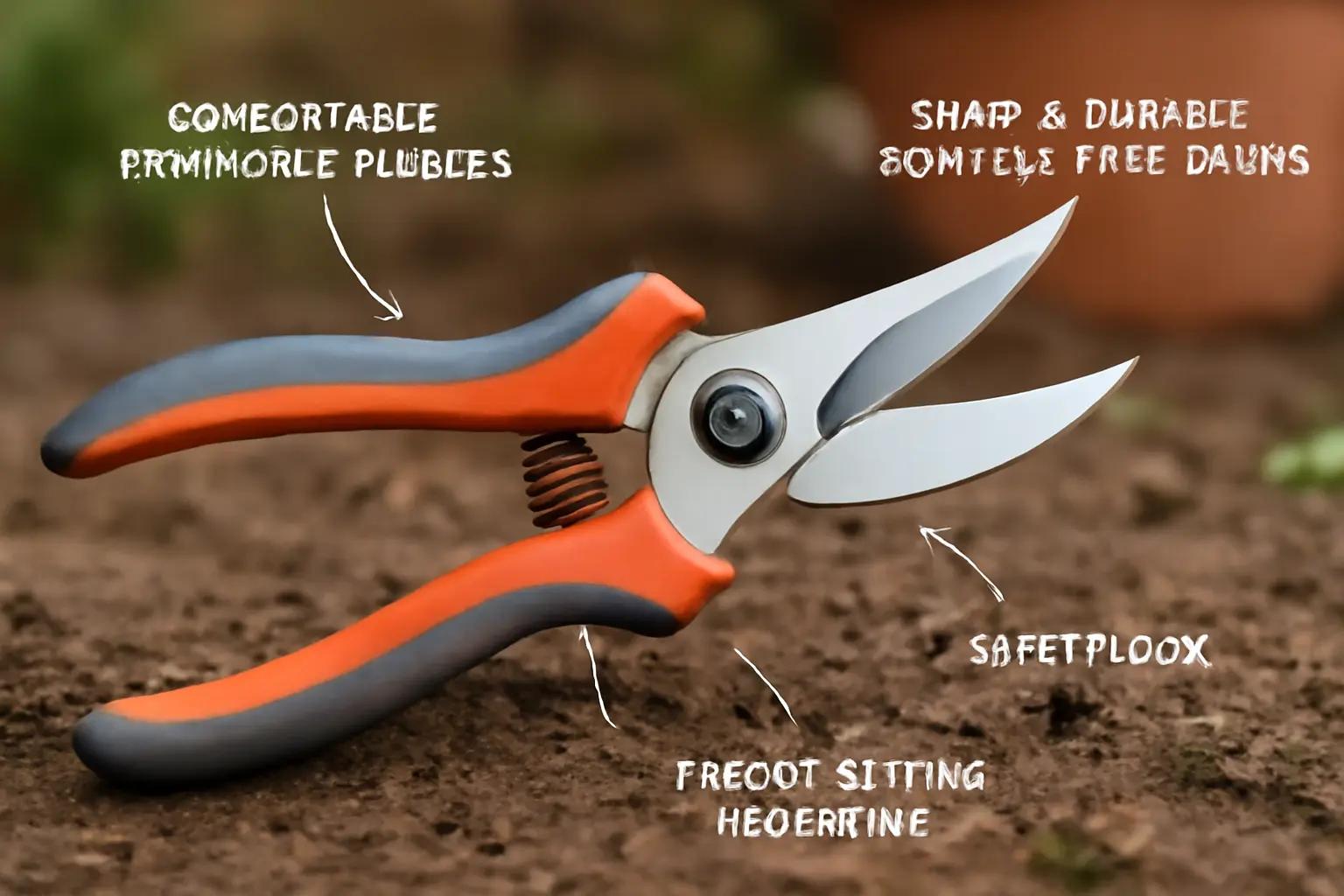
3. Key Features to Look for in Small Pruning Shears
A reliable locking mechanism adds convenience and safety, securing the shears closed when not in use. Ease of cleaning cannot be overlooked as sap and debris build-up affect blade performance; models with quick-release blades simplify maintenance remarkably. Durability also ties to these features, with premium shears built for frequent use without loosening or blade dulling. Practical example: a gardener using stainless steel shears with cushioned grips reports less hand strain and faster cleanup, improving overall pruning efficiency compared to cheaper, less durable models.
Focus on these key features to find small pruning shears that offer lasting performance and comfort, making your gardening tasks easier and more enjoyable.
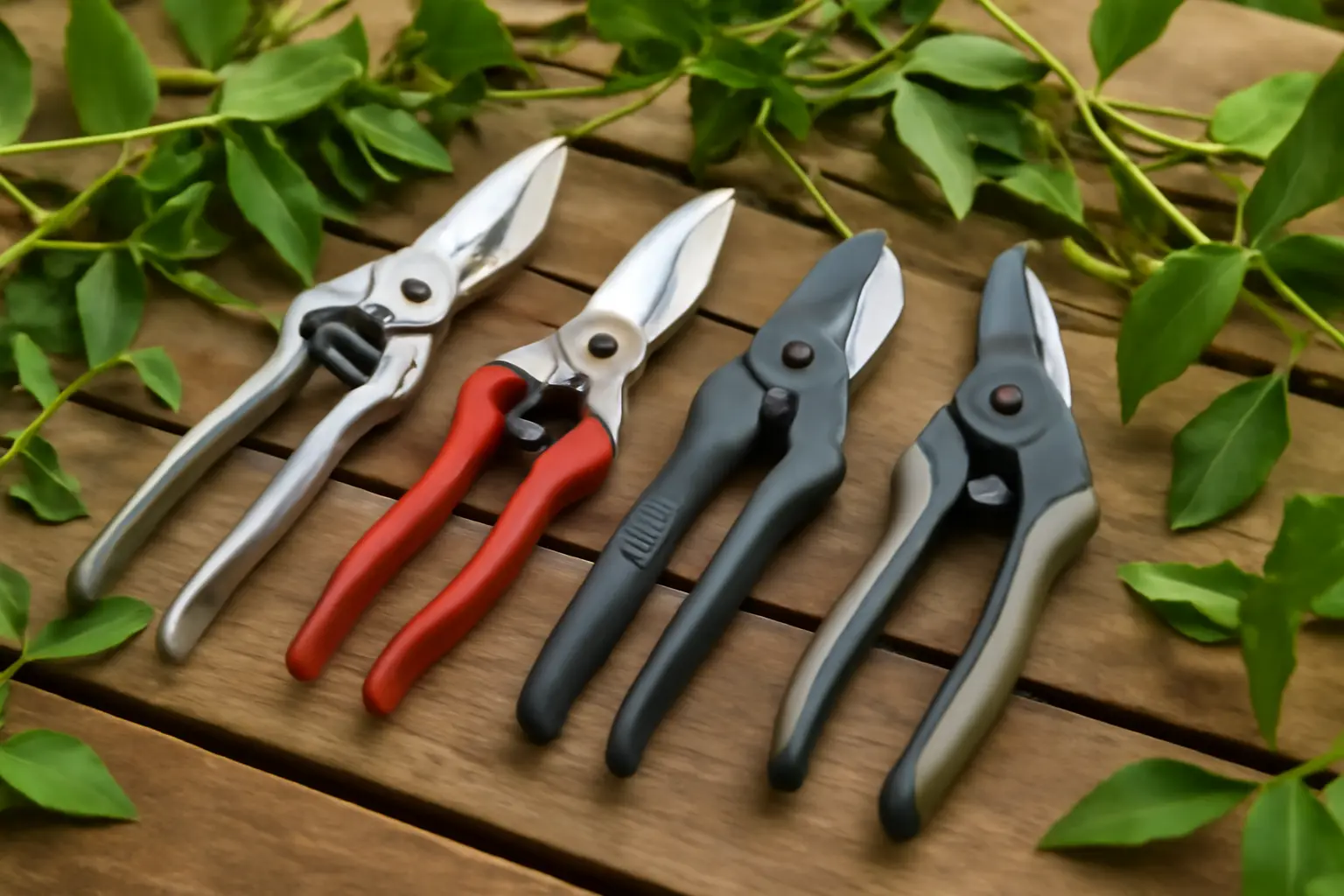
4. Top Small Pruning Shears: Product Recommendations
– Fiskars 91095935J: Highly regarded for its lightweight feel and sharp bypass blades, this model suits detailed cutting tasks. Pros include ergonomic handles that reduce hand fatigue during prolonged use; however, some users find the blade maintenance slightly demanding. Price ranges around $25-$35.
– Felco F-6 Classic: A professional-grade choice widely praised for its precision and longevity. It features hardened steel blades that retain sharpness, ideal for frequent pruning jobs. The main downside is its higher price point, typically $60-$75, but users affirm it as an investment worth considering.
– Gonicc 8-inch Pruning Shears: This model offers a balance between affordability and functionality. Sharp, rust-resistant blades and comfortable grips make it popular among casual gardeners. It is available between $15-$25, a budget-friendly option without sacrificing quality.
User experiences consistently emphasize comfort and blade sharpness as determinants for repeated use, with smaller pruning shears excelling where intricate plant shaping or trimming is needed. These selections provide reliable cutting power and ergonomic advantage, fitting a variety of gardening styles and expectations.
5. Comparison Table of Leading Small Pruning Shears
– Blade Material: Stainless steel blades are common for rust resistance and durability, while carbon steel offers sharper edges but requires maintenance.
– Size: Compact designs around 6 to 8 inches suit delicate trimming, offering better maneuverability.
– Weight: Lighter pruners reduce hand fatigue over extended use.
– Locking Type: Safety locks vary from slide locks to spring-loaded, impacting ease of use and safety during storage.
– Ideal Use Cases: Some models excel in precise fruit tree pruning, others in general garden maintenance or rose bush trimming.
This comparative insight helps users align small pruning shears with their gardening style and task demands, ensuring efficiency and comfort in garden care throughout 2025.
6. How to Choose the Right Small Pruning Shears for Your Gardening Needs
– Size: Opt for shears that comfortably fit your hand. Smaller hands benefit from compact grips, while larger hands require more substantial handles to avoid fatigue during prolonged use.
– Blade Type: Bypass blades deliver clean cuts suitable for live plants and fine pruning. Anvil blades, meanwhile, are ideal for tougher, dead branches but may crush green stems, so select based on your primary plant types.
– Design: Look for ergonomic designs with non-slip grips to reduce strain and improve control during intricate tasks, like shaping bonsai or trimming delicate flowers.
For left-handed gardeners, some models specifically accommodate reversed blade orientation, preventing awkward cutting angles that can damage plants or reduce shears’ lifespan. Right-handed models dominate the market but left-handed options are increasingly available.
Beginners should prioritize ease of use, safety features, and durability. Experienced gardeners might focus on precision, blade sharpness, and balance for detailed work.
By aligning your pruning shears’ attributes with your specific gardening tasks—whether shaping shrubs, harvesting herbs, or maintaining fruit trees—you ensure cleaner cuts, protection of plant health, and greater comfort across seasons.
7. Where to Buy Small Pruning Shears
Visiting garden centers and specialty stores remains valuable for experienced gardeners or those prioritizing handle comfort and shear precision. Trying shears firsthand lets you assess balance and fit, critical for prolonged use. Expert staff at these stores can offer personalized advice tailored to your pruning needs.
Consider warranty and return policies carefully. Trusted brands sold through reputable channels often include guarantees that protect against defects and ensure customer satisfaction. When buying in-person, immediate exchange options enhance peace of mind, while online purchases usually come with return shipping stipulations.
Choosing where to buy small pruning shears ultimately depends on your priorities—be it tactile testing and guidance or variety and price. For a gardener seeking reliable, ergonomic equipment in 2025, combining both methods might offer the best outcome.
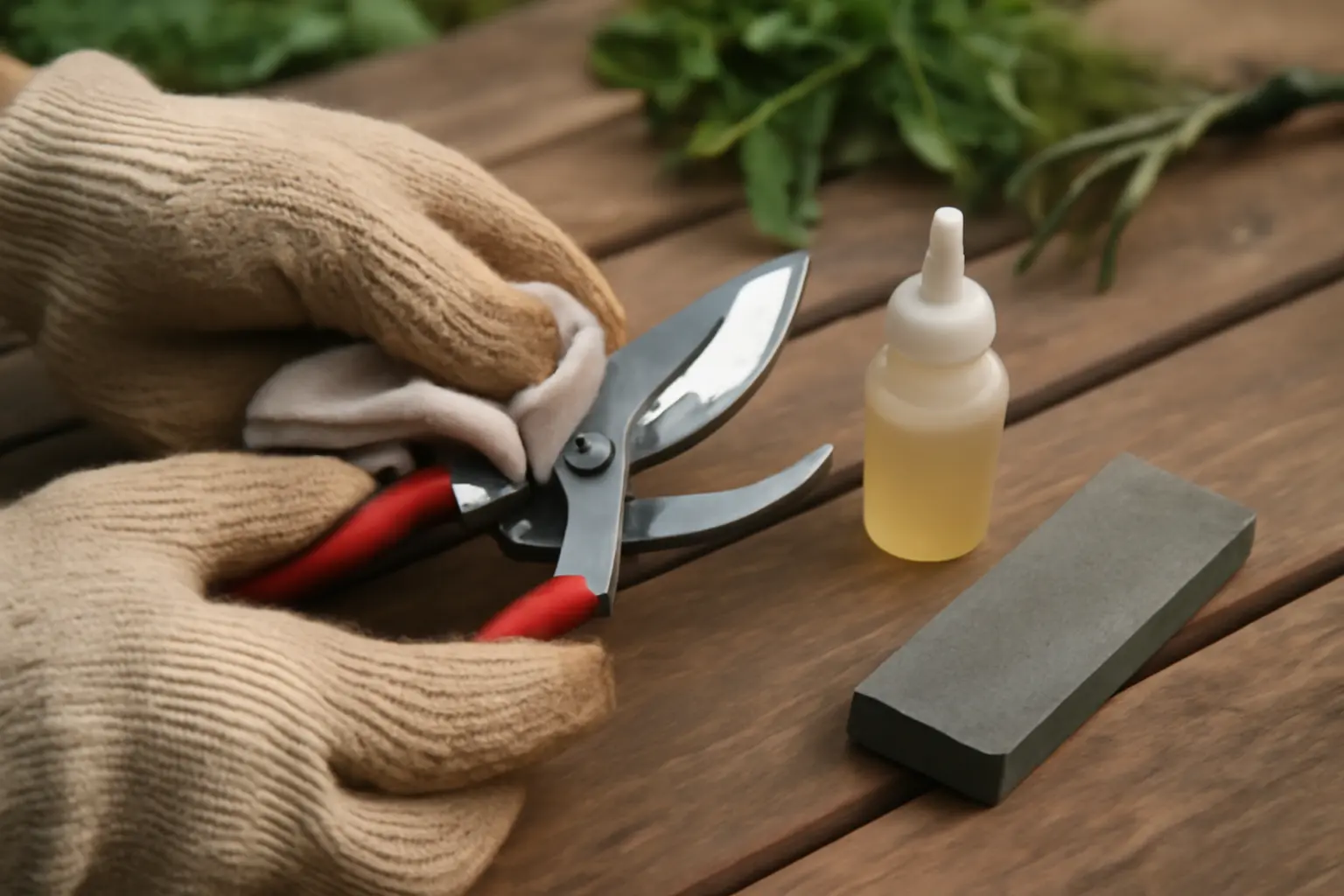
8. Care and Maintenance Tips for Small Pruning Shears
Store shears in a dry place, ideally hanging or in a protective sheath, to prevent damage and accidental injury. Periodic inspections help identify worn-out washers or screws; replace these parts promptly to avoid compromising cutting efficiency. When blades become chipped or severely worn despite sharpening efforts, it is wise to replace them or invest in a new shear model to keep your garden tools performing at their best. Consistent care not only preserves blade sharpness but also protects your investment in high-quality small pruning shears.
9. Frequently Asked Questions About Small Pruning Shears
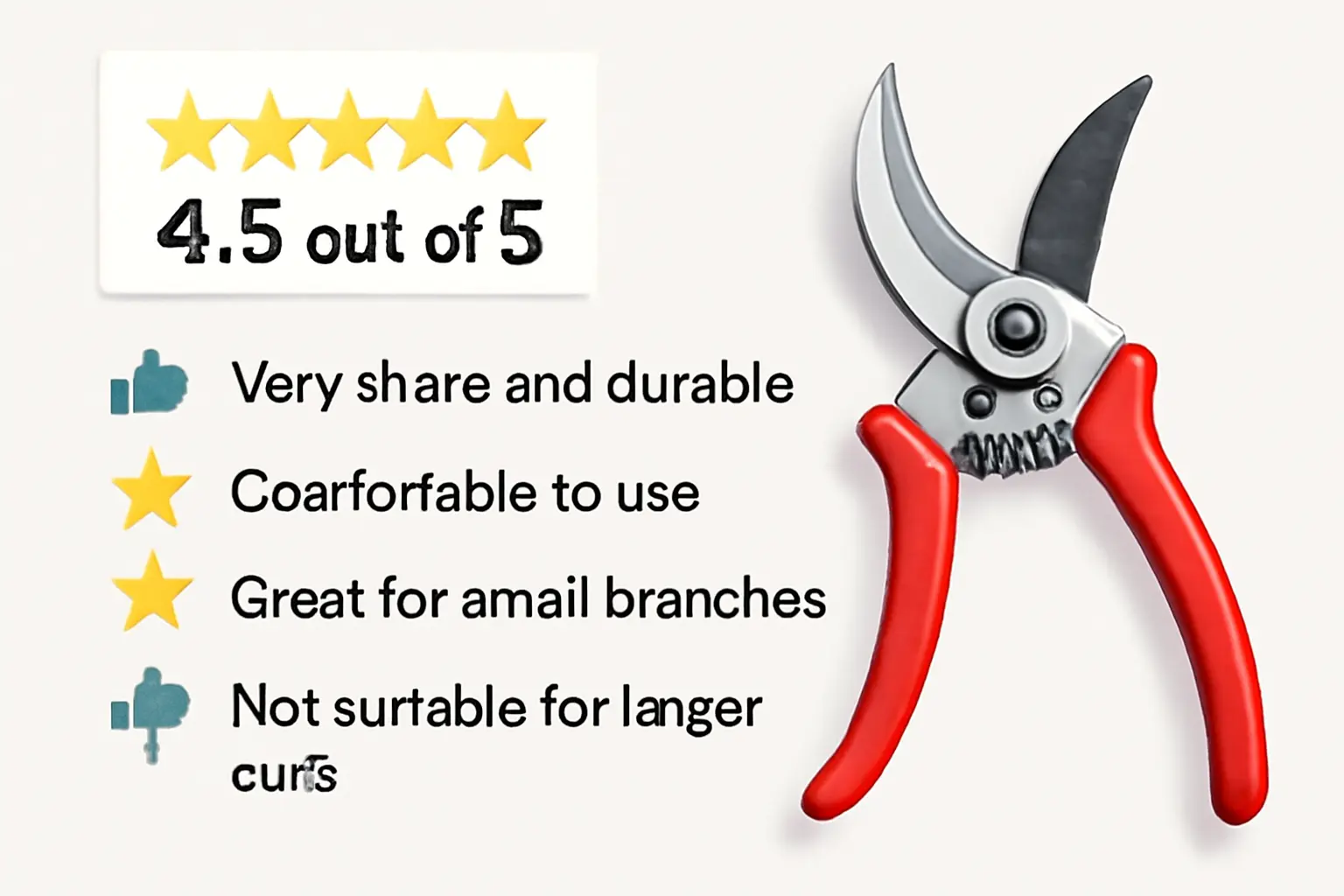
10. User Reviews and Ratings Summary
Here are key takeaways from real user experiences to aid decision-making:
– Sharp, precise cuts are celebrated, especially for delicate pruning work.
– Ergonomic design enhances comfort, crucial for frequent gardeners.
– Durability varies widely; higher-rated shears often feature rust-resistant coatings and replaceable blades.
– Some users report difficulty maintaining blade sharpness, emphasizing the need for proper care.
Understanding these points helps differentiate models that perform well in everyday garden maintenance from less reliable alternatives. Choosing small pruning shears with positive verified reviews ensures efficiency and longevity tailored to specific gardening needs.
11. Supplemental Content: Related Tools and Alternatives
Choosing between these alternatives depends on detail and scale requirements. For intricate detail work like deadheading or fine shaping, mini garden scissors provide accuracy and gentle handling. Conversely, small pruning shears are better suited for frequent pruning of woody plants and tougher branches up to their cutting capacity. Small hand garden shears fill the gap when a bit more leverage and blade length are necessary but bulkier shears are excessive.
For gardeners seeking to expand their toolkit beyond small pruning shears, exploring these related tools enhances efficiency and precision. Reliable brands often offer comprehensive product lines catering to varied gardening needs. Numerous online resources and specialized stores provide guides and comparisons to help match the right tool with your garden’s specific requirements.

